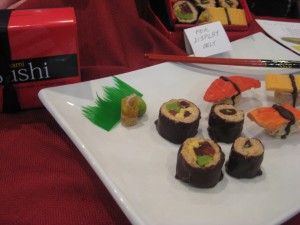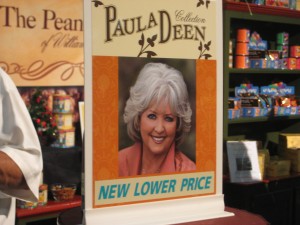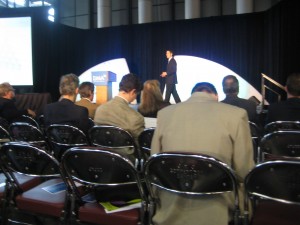It appears that the purveyors of fancy foods, and the consumers who buy from them, are ready to lead us back to fiscal health. The Javits Convention Center, which two weeks ago was so deserted you could picture yourself getting mugged during DM Days, was today so packed it was hard to make it down the aisles. Both exhibitors and attendees were delighted.

There’s always a big trend that emerges at the Fancy Food Show and this year it was, as one possibly might have guessed, fancy chocolate…. the stuff that soothes us and feels like an acceptable treat when life is hard. There was single origin chocolate (lots and lots of that), high end chocolate with handsome packaging, chocolate to eat with wine, even chocolate sushi. Runner up trend: tea, in both liquid and dried forms. Also the broad category of things you can make at home that feel like currently unaffordable restaurant meals: pasta sauces from Rao’s or Mario Batalli, premade soufflés guaranteed not to fall, spice kits with a recipe card etc.

Flavored water is still a strong category, while celebrity foods, energy drinks, artisanal salts, salsas and specialty vinegars—each a trend at one point—were hard to find at the show. Most surprisingly pervasive single item: sun dried tomatoes. Most popular booths among attendees on a New York summer day: anything serving iced desserts, or slicing prosciutto or Serrano ham.


